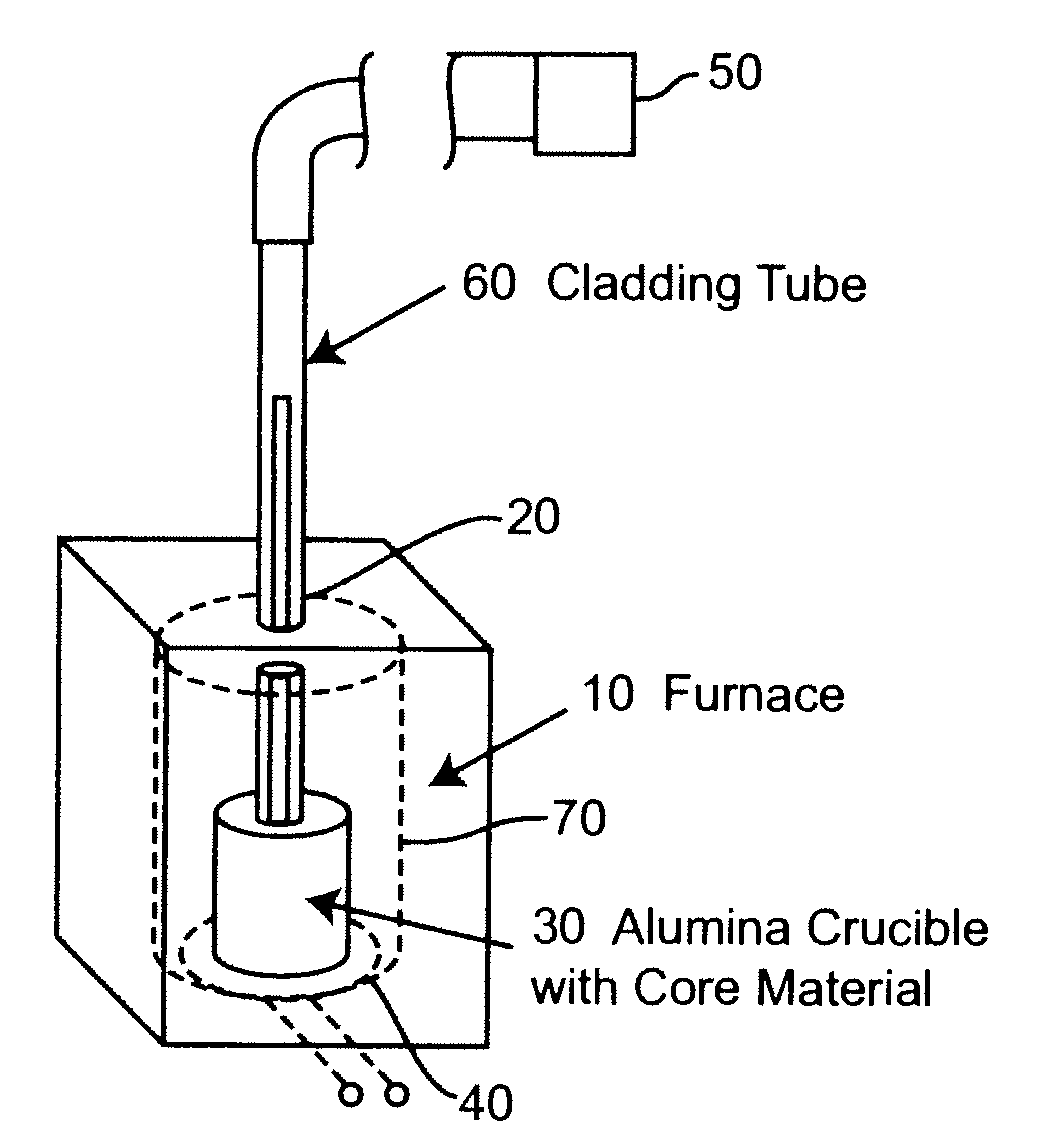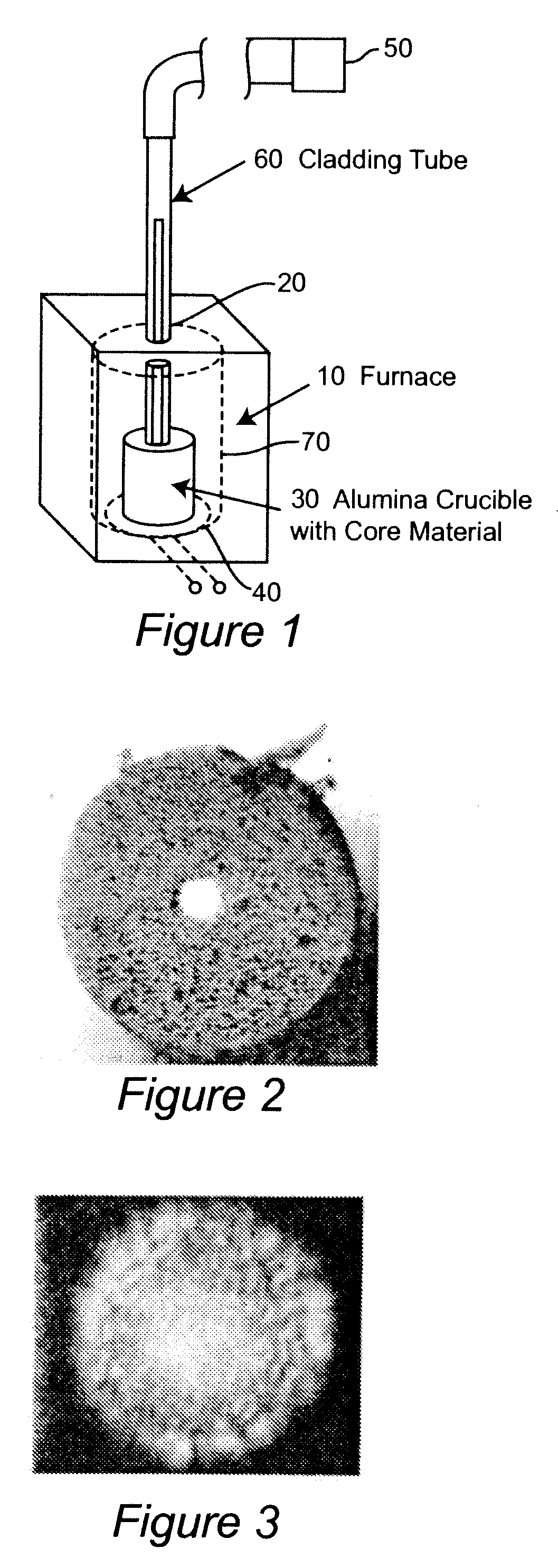Core suction technique for the fabrication of optical fiber preforms
a technology of optical fiber and preforms, which is applied in the field of preforms for the fabrication of optical fibers, can solve the problems of high toxicity, very slow and somewhat complicated process, and none of the above known techniques of fabricating optical fiber preforms lend themselves particularly well to confinement of substances and vapors
- Summary
- Abstract
- Description
- Claims
- Application Information
AI Technical Summary
Benefits of technology
Problems solved by technology
Method used
Image
Examples
Embodiment Construction
[0020]Referring now to the drawings, and more particularly to FIG. 1, there is shown a schematic depiction of basic apparatus for practice of the invention by which the principles and methodology of the invention sufficient to its successful practice may be readily conveyed to those skilled in the art. The basic apparatus sufficient to practice the invention is extremely simple and suitable structures from which the apparatus may be assembled are commercially available. Basically, the apparatus comprises a muffle furnace 10 or other type of furnace preferably dimensioned to accommodate a principal portion, if not all, of a preform of the desired length which is generally equipped with a thermometer hole 20. (In general, the preform that can be fabricated will be substantially limited to the portion of the cladding tube which can be heated in the furnace since the core glass will generally solidify quickly upon reaching an unheated portion of the cladding tube. Common sizes of thermo...
PUM
| Property | Measurement | Unit |
|---|---|---|
| core diameter | aaaaa | aaaaa |
| core diameter | aaaaa | aaaaa |
| inner diameter | aaaaa | aaaaa |
Abstract
Description
Claims
Application Information
 Login to View More
Login to View More - R&D
- Intellectual Property
- Life Sciences
- Materials
- Tech Scout
- Unparalleled Data Quality
- Higher Quality Content
- 60% Fewer Hallucinations
Browse by: Latest US Patents, China's latest patents, Technical Efficacy Thesaurus, Application Domain, Technology Topic, Popular Technical Reports.
© 2025 PatSnap. All rights reserved.Legal|Privacy policy|Modern Slavery Act Transparency Statement|Sitemap|About US| Contact US: help@patsnap.com


